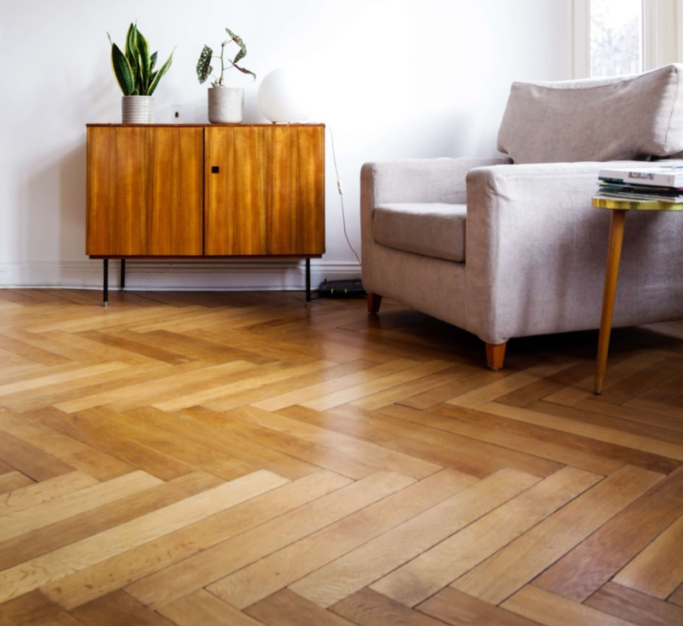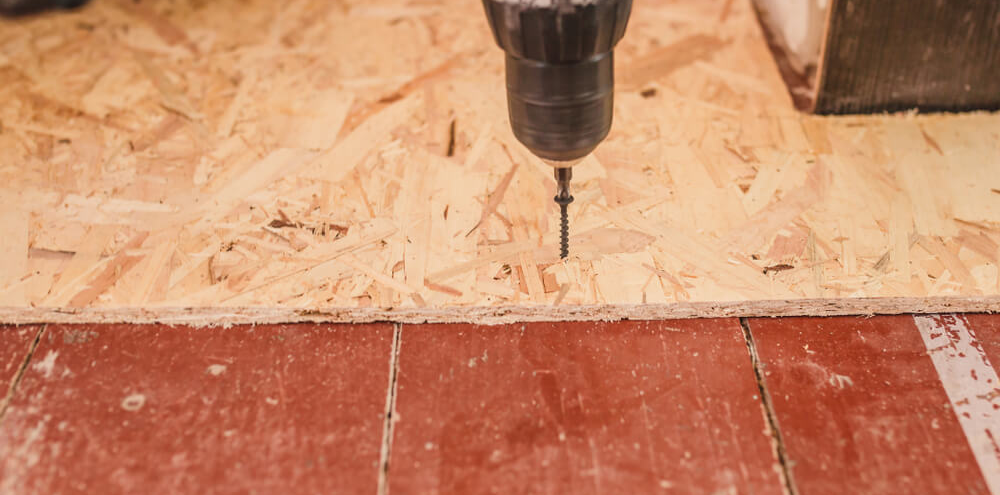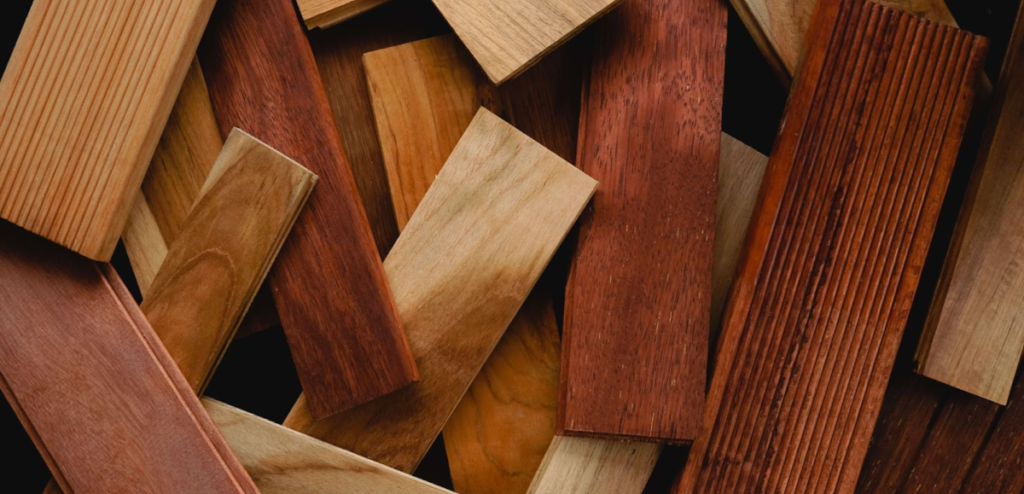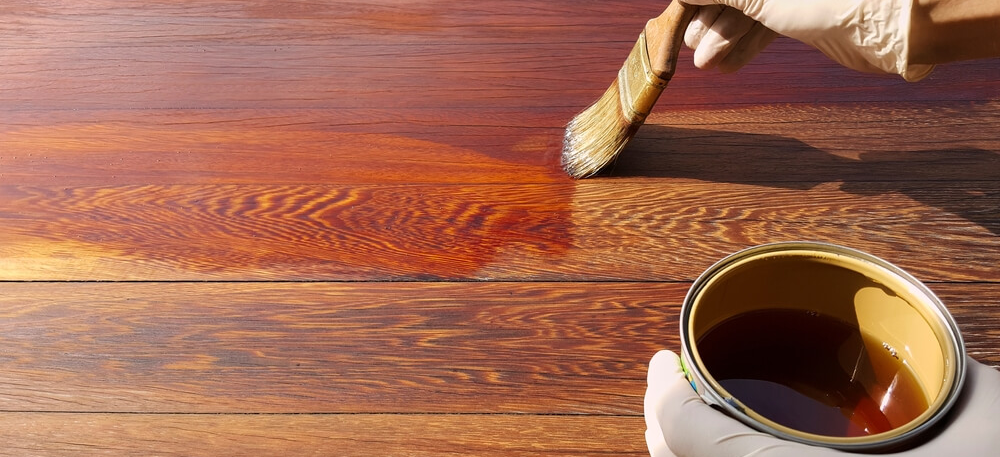
If you plan to renovate your home or office, one of the biggest decisions you must make is choosing the right flooring. Hardwood flooring is popular among home and business owners because of its durability, longevity, and aesthetic appeal. However, selecting the right type of hardwood flooring can be daunting, especially if you are unfamiliar with the various options available in the market.
In this buying guide, we will walk you through the essential factors to consider when buying hardwood flooring to help you make an informed decision.
Factors To Consider When Buying Hardwood Floors

Given below are the details about each of the factors to help you understand what to look for when selecting the perfect hardwood flooring. Let’s have a look at these must-have features:
1. Subfloors

Analyzing the nature and condition of your subfloor is the first and essential step before purchasing hardwood floors. It is a structural layer that sits directly on the joists and below the floor. Therefore, it is important to ensure the good condition of the subfloor.
If the subfloor is uneven or has moisture issues, it can affect the durability and longevity of the hardwood floors. Observe the subfloor for any signs of damage, such as cracks, water damage, or unevenness. It is best to do so if it needs to be repaired or replaced before installing hardwood floors.
Look at the type of subfloor installed. Concrete basements, plywood, and concrete subfloors are the commonly used ones. You can choose the type of hardwood floor accordingly. Read below to learn about each type of wooden floor.
2. Types of hardwood floors
Several types of wood floors are available, but solid and engineered hardwood flooring are popular options. Before finalizing the floor for your place, you must pay attention to multiple factors to decide the type of hardwood floor.
Solid hardwood flooring is preferred when durability is your top priority. Due to their thick nature, they are long-lasting and can be sanded and refinished multiple times. Its thicker top makes it a perfect choice for high-traffic areas. These floors offer various styles, design ideas, and color customization abilities. Solid hardwood floors are loved by those having design concerns.
Engineered hardwood flooring is suggested when you want something for moist areas. In addition to this, they are perfect for plywood or concrete subfloors, while solid floors require wooden subfloors. They are preferred for someone on a slightly tight budget who wants a durable option prone to warping or shrinking.
Both of these flooring have their pros and cons. The ultimate choice depends on your personal preferences and choice. We suggest you read the detailed differences between solid and engineered hardwood floors to make an informed decision.
3. Wood specie

In addition to types of wood, wood specie is another important factor that a buyer pays attention to. Each species has its unique characteristics, including color, texture, grain pattern, and hardness, that impact the durability and aesthetics of the flooring. Have a look at some of the commonly used options with their preferred situations:
- Oak is one of the most popular and widely used hardwood species for flooring. It has a classic look with a prominent grain pattern. Its durability makes it ideal for high traffic areas.
- Maple is another popular choice due to its light color and durability. It is also less porous than oak which is why it is resistant to stains and moisture.
- Cherry has a distinctive reddish-brown color that darkens over time. It is an excellent choice for traditional and formal settings.
- Hickory has a rustic look with a dramatic grain pattern and color variations which makes it suitable for country-style homes.
- Walnut is a premium hardwood species with a rich, dark color and a straight grain pattern. It is softer than oak, making it more prone to dents and scratches. Its luxurious appearance makes it an attractive option for upscale homes.
Other hardwood species to consider include birch, ash, and mahogany, each with its unique characteristics and benefits. When choosing a wood species, it is essential to consider factors such as the room’s style, traffic levels, and maintenance requirements.
4. Grain pattern
Wood grain refers to the direction the wood fibers run on the board’s surface. Some popular types include plain-sawn, rift-sawn, and quarter-sawLet’slain-sawn, also known as flat-sawn, is the most common and economic grain pattern. It is characterized by the undulating patterns and cathedrals that are visible on the surface of the wood. This type of grain is best for homeowners who want a more natural, rustic look for their hardwood floors. It can be prone to warping or cupping over time due to changes in moisture levels.
Rift-sawn is a straight, consistent grain pattern with a unique and modern look. This type of flooring is more stable and less prone to warping than plain-sawn. It is a good choice for high-traffic areas or places with fluctuating moisture levels.
Quarter-sawn is similar to rift-sawn with straight lines, consistent grain patterns, and distinctive ray flecks that are highly sought after. Its flooring is the most stable of the three-grain patterns and is highly resistant to warping and cupping. It is often used in high-traffic areas, such as commercial spaces or homes with pets. This is best for those who want a more formal or contemporary look for their hardwood floors.
Regarding durability and stability, all three grains provide strong and stable floors. However, quarter-sawn wood is less likely to expand or contract with changes in temperature and humidity. It is a good choice for areas with varying climate conditions.
In terms of cost, rift-sawn and quarter-sawn flooring are typically more expensive than plain-sawn flooring due to the extra labor and waste involved in producing the planks. However, these patterns’ stability and unique look can make them worth the investment in the long run.
You can also adjust floors with different grain patterns to create an aesthetic look. This also helps you lay hardwood floors differently in different rooms.
5. Hardness Rating
Wood rating is a measure of the wood’s hardness and durability. The National Wood Flooring Association has developed a Janka Hardness Test to determine the strength and durability of wood. It measures the force required to embed a steel ball into the wood. The higher the Janka rating, the more durable and hard the wood is.
A high Janka rating is preferred in high-traffic areas such as hallways, living rooms, and entryways. On the other hand, a lower Janka rating may be preferred in areas that are less likely to experience high traffic, such as bedrooms or home offices.
Some of the most common wood ratings for hardwood floors include:
- Oak: Oak has a Janka rating of 1290, which makes it a durable option for high-traffic areas.
- Maple: Maple has a Janka rating of 1450, which is harder than oak and a great choice for high-traffic areas.
- Hickory: Hickory has a Janka rating of 1820. This makes it an ideal choice for areas with heavy foot traffic.
- Brazilian Cherry: Brazilian cherry has a Janka rating of 2350, making it an extremely durable and hard option for high-traffic areas.
- Walnut: Walnut has a Janka rating of 1010, which makes it a great option for low to moderate-traffic areas.
When it comes to aesthetics, higher-rated wood has more consistent color and grain patterns. This gives a more uniform look to the flooring. However, lower-rated wood has unique character and variations in color and grain. Overall, it is important to consider both durability and aesthetic preferences when choosing the wood rating for hardwood floors.
6. Grade
Wood grade refers to the quality of the room in the flooring. It is determined by the number of knots, mineral streaks, and other natural imperfections in the wood.
There are three main grades of hardwood flooring: select, #1 common, and #2 common.
- Select grades are of the highest quality. It has the least amount of knots and imperfections. It is a uniform, consistent color with minimal variation in grain patterns.
- #1 common grade has more natural imperfections, such as knots and mineral streaks. It still has a relatively uniform appearance. It is a good choice for those who want a natural look with some character.
- #2 common grade has the most knots and imperfections, resulting in a more rustic and natural appearance. It is perfect for those who want a more casual, relaxed look.
The preferred wood grade depends on the buyer’s overall design aesthetic and personal preference. For a more formal, polished look, the select grade is preferred. For a more natural, rustic look, #2 common grades are preferred. #1 common grade falls somewhere in between, offering a natural look with some imperfections.
7. Plank width & Height

Wood plank width and Height greatly impact the selection of your floors.
Wider planks are a popular choice for modern homes as they give the room a spacious and elegant feel. However, wider planks can also show more gaps and seams. This can be a concern for some homeowners. On the other hand, Narrower planks create a more traditional and classic look. They are a better option for smaller rooms.
Similarly, the Height of the planks also affects the overall look of the room. Longer planks can make the room appear more spacious and modern, while shorter planks can create a more traditional look.
For larger rooms, wider and longer planks are a good option for a more open and modern look. For smaller rooms, narrower and shorter planks help make the space more cozy and inviting.
It is also worth noting that wider and longer planks may come at a higher cost than narrower and shorter ones. Therefore, budget is also a factor in considering plank width and Height.
8. Color
Wood color significantly impacts the overall look and feel of a space. It can range from light to dark. Each color has its unique characteristics and advantages.
Light-colored hardwoods, such as white oak and maple, are ideal for creating a bright and airy feel in a space. They pair well with cool colors and make a room feel more spacious. They are a great choice for smaller rooms. Additionally, light-colored hardwoods can hide scratches and dents better than dark-colored hardwoods.
Medium-colored hardwoods, such as hickory and red oak, are a popular choice due to offering a good balance between light and dark colors. They provide warmth to a space and can complement various interior design styles.
Dark-colored hardwoods like walnut and mahogany create a cozy and intimate atmosphere. They pair well with warm colors, add richness and depth to a space, and create a sense of luxury. However, they may not be suitable for smaller spaces as they can make a room feel smaller and more enclosed.
When selecting a wood color for your floors, it is important to consider the existing color scheme of the space. The amount of natural light in space should also be considered.
9. Finish

Wood finish not only enhances the aesthetic appeal of the flooring but also protects it from wear and tear. There are different types of wood finishes available in the market.
One of the most popular wood finishes is the oil-based finish. It offers a warm, natural look to the wood and penetrates the surface to protect the wood from within. This type of finish is ideal for high-traffic areas as it is more durable than other finishes.
Another popular wood finish is the water-based finish. It offers a clear, natural look to the wood. It dries quickly and emits fewer fumes than oil-based finishes, making it a more eco-friendly option. It is also ideal for those who want a more modern, matte finish to their hardwood floors.
A varnish finish is a good choice for those who want a glossy finish. This finish provides a shiny, reflective surface to the wood and is very durable. However, it is more difficult to apply than other finishes and requires more maintenance.
10. Location (traffic)
Different places have different flooring requirements.
In high-traffic areas such as hallways, entryways, and living rooms, choosing a hardwood that can withstand wear and tear is important. Hardwoods with a high Janka hardness rating, such as Brazilian Walnut or Hickory, are ideal for these areas. They are also suitable for commercial spaces.
A softer hardwood such as American Cherry or Walnut can be used in bedrooms. They are less likely to get damaged due to less foot traffic.
For kitchens and bathrooms, choosing a hardwood that is resistant to moisture and spills is important. Red and white oak are common choices because they have a high resistance to water damage.
Due to moisture concerns, engineered hardwood floors are best in basements because these floors are less susceptible to warping and cracking than solid hardwood.
11. Installation method
There are generally two types of installation methods: nail-down and floating.
- Nail-down installation involves nailing each plank of hardwood flooring to the subfloor. This makes it a more permanent installation method. It is preferred in areas with high foot traffic and heavy furniture, such as living and dining rooms.
- Floating installation involves using an underlayment to support the hardwood flooring, which is then clicked or glued together. This method is preferred in areas where subflooring, such as basements and concrete slabs, may need to be more perfectly level. Research shows that hardwood flooring is preferred over laminate flooring due to its DIY installation facility.
It is important to note that the installation method can also affect the project’s overall cost. Nail-down installation may require the services of a professional installer, whereas a DIYer can do a floating installation.
12. Cost

Cost is the major factor to consider when buying hardwood floors. Hardwood flooring can be quite expensive, so it is important to understand the various factors that influence the cost of hardwood flooring and how to balance cost with quality.
The first factor influencing hardwood flooring cost is the type of wood species. Exotic hardwoods are generally more expensive than domestic hardwoods. Oak and maple are two of the most popular domestic hardwoods and are generally less expensive than exotic hardwoods like Brazilian cherry or teak.
Plank width and Height also impact the price. Wider and thicker planks are more expensive than narrow and thinner ones.
Wood grade also influences hardwood flooring costs. Select grades are generally more expensive than lower-grade woods with more knots and character marks. However, lower-grade woods.
Finally, the finish of the hardwood flooring is another cost-determining factor. Prefinished hardwood flooring is more expensive than unfinished floors. However, prefinished hardwood flooring can save time and money on installation costs.
Ultimately, the preferred cost of hardwood flooring will depend on individual budgets and preferences.
Some Other Helpful Tips To Purchase The Hardwood Floors

In addition to these factors to consider, we also give you some tips to make a wise hardwood flooring purchase:
- Test the wood floors for different parameters. Given below are some of the practical and helpful ways to check its quality:
1. Wear resistance
Take a 6×6-inch sample of each flooring material and subject it to an abrasion machine fitted with a fine sandpaper disc. Assess each sample for signs of visible wear after each cycle of sanding.
2. Resistance to denting
Take one heavy, blunt weight and one lighter, pointier object. Drop them on the floor from progressively higher release points. Examine the flooring for visible damage after each drop. The higher the drop before the damage becomes evident, the better a floor’s dent-resistance rating.
3. Potential for fading
Take a flooring sample and expose it to ultraviolet rays for two weeks. Then compare the exposed portion to an unexposed portion. This gives us information about what can happen to a section of flooring that gets more sunlight than the rest of a room over time.
- Be careful while selecting bamboo. Do not choose it for high-traffic areas because they cannot withstand excessive pressure and may dent.
- Beware that cheaper is not always the worst, and expensive is only sometimes the best.
- Thoroughly perform your research, and ask your friends, family, or some experts for reliable suggestions and recommendations.
- Plan the entire process before purchasing. Give popper acclimation time to the wood before installation.
- When planning your budget, remember to include the labor cost for removing old floors, installing new ones and 10% additional for waste that goes into cutting.
- It is suggested not to install a floor-over radiant heating system that exceeds the temperature of 86 degrees F.
Conclusion
Hardwood floors are a great investment that adds aesthetic appeal and value to your home. But selecting them can be trickier, especially without research or expert assistance. You must carefully observe all the above factors before making a purchase. We hope this guide has helped you to the max. If you still have any queries, comment down below. We will be happy to assist you further.


2 Comments